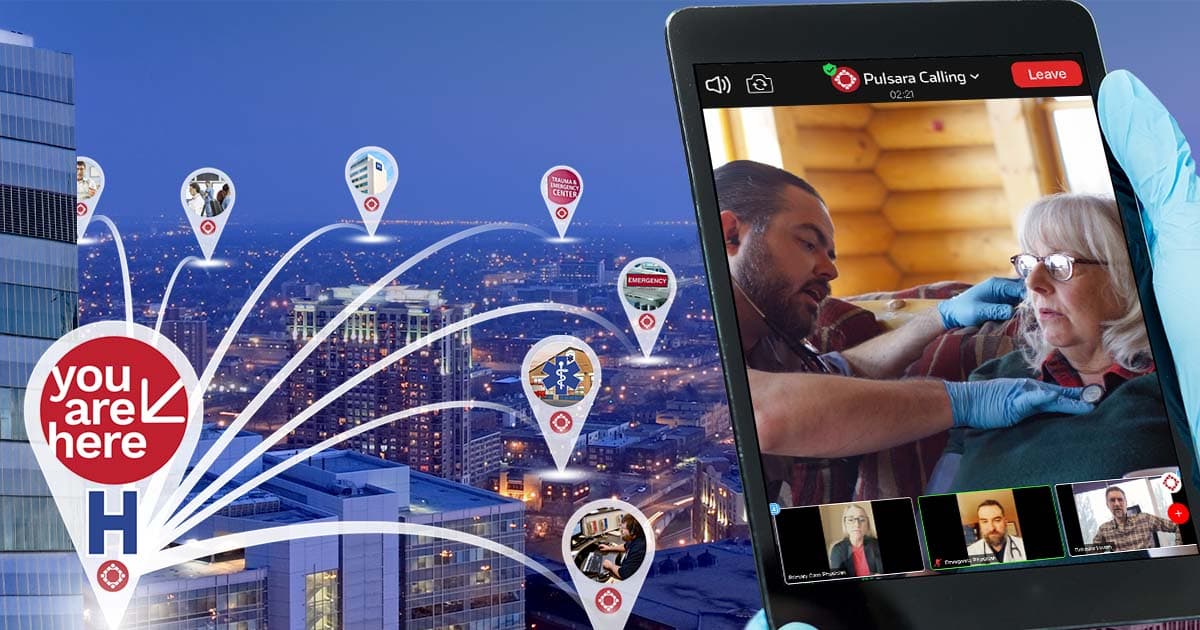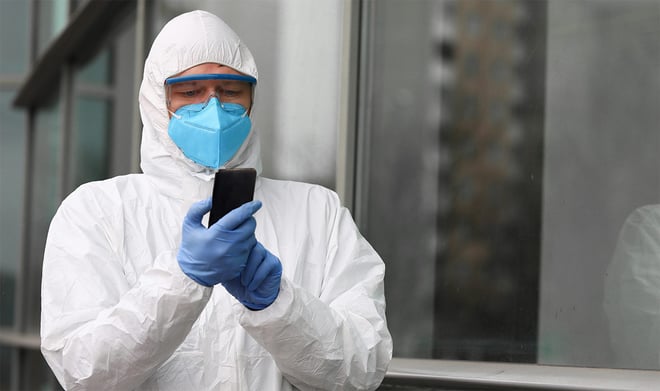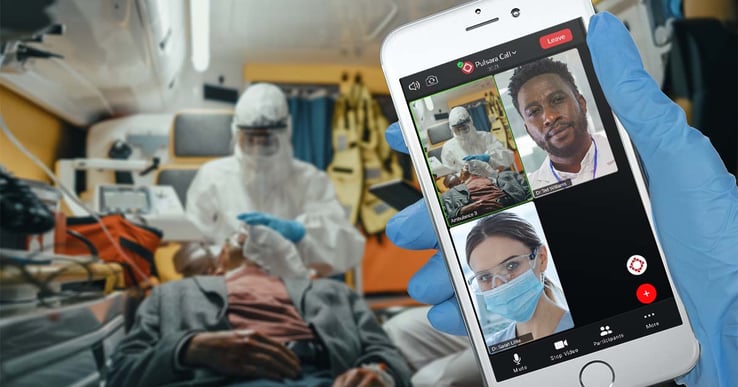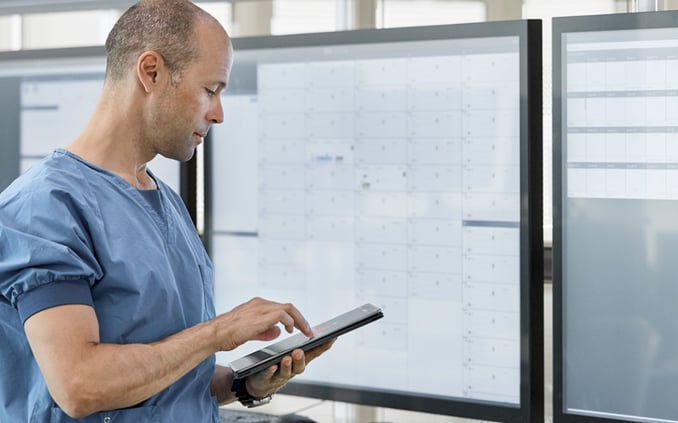Pulsara Around the World - 2025 Recap and January 2026
December Recap After an incredibly busy events year with 102 conferences, trade shows, and sponsorships, December was on the slower side for us, with...

COVID-19 has taught us quite a bit about our current methods for communicating in a crisis. Whether you are currently experiencing a COVID-19 surge, are anticipating your next surge, or are catching up from your last surge, there is no doubt about one thing: the past two years have exposed many of the flaws in our system. There is good news, though. Now that we can pinpoint, identify, and examine some of the flaws, we have a clear path toward some new ways that we can set ourselves up for success in the future.
Over the course of the pandemic, we’ve seen firsthand the results of our current systems. We now know that very few are truly prepared for all hazards and stress events.
Communication has a lot to do with this. The systems we use are not interoperable with one another, meaning that they aren’t compatible and can’t talk to each other. You can’t radio a report to a fax machine, just as you can’t fax a document to a pager. These technologies work for one-to-one communication about everyday emergencies, but they have a difficult time scaling up to meet our needs and keeping everyone on the same page when we need to reach across organizations in a large-scale incident. The technology that serves us on a daily basis breaks down when we need to expand beyond our normal sphere of communication—which puts us in a vulnerable position when we face the unknowns of a large-scale emergency.

In any emergency situation, but particularly during stress events, it is absolutely vital to create shared awareness amongst all members of a team. To effectively manage an incident, we need to keep everyone who may be responsible, accountable, informed, or consulted in the loop.
In order to have a system that can successfully meet needs in a stress event, we need a solution that can be used 365 days a year for everyday emergencies, yet can scale up quickly to meet the new demands of a sudden stress load. If we create a system where every day is "disaster day," then there is no change to our normal protocols when a stress event hits. The more familiar we are with the technology we use to communicate during a crisis, the less of a learning curve we’ll have when it comes time to communicate during high-stress situations.
We also need to be able to easily connect with the people we don’t normally interact with, and have a familiar platform on which to do so. Having everyone on the same communication system would allow us to involve players outside our normal everyday circles. Since they would use the same systems we do, there would be less friction in instantly scaling up communication.

Another flaw in our current system revolves around our lack of a streamlined method for keeping track of resources and patients on a local, regional, state, and even interstate scale. In order to effectively manage an emergency, you need to know what resources are available, where those resources are located, and who needs them. That means current bed capacity, ventilator availability, and staffing all need to be tracked. All of these information sources about supply need to be located in one place, must work in tandem, and must be accurate and kept up-to-date. You can’t respond effectively if you have beds available but don’t know who needs them—or if you aren’t positive of the number of beds you have available to offer in the first place.
But there is a risk to keeping track of supplies manually. When human beings must manually enter supply data in a separate system from their normal workflow tools, the data is at risk of becoming flawed by several factors: Human bias, elapsed time, and definition inconsistencies, among other things. Manual tracking systems quickly become work-intensive. During stress events, the system can quickly become outdated—and worse, inaccurate—as everyone struggles to keep up with insurmountable workloads. Automating this supply-side data should be the goal.
And as we struggle with tracking the supply of resources we have available, we also lack systems that give us a complete, up-to-date understanding of the current demand for given resources. It’s difficult to dole out resources with no clear idea of who needs them—especially when they’re needed immediately. A supply tracking solution can help you log what you have available, but these solutions don’t connect you to the people who need those resources.

In order to efficiently link suitable receiving facilities to patients needing placement, we will need to build systems with the ability to accurately portray both supply and demand, so that we can react with the right resources at the right time. Blending fully automated data about available resources with real-time data about demand is the only way to take proper action swiftly enough to stay ahead of the curve.
Historically, our communication technology has limited who we could communicate with, making it difficult to connect with the people we really need to talk to. That's not good enough anymore. We need to be able to foster relationships that, due to communication barriers, couldn't have existed prior to COVID-19. As we look toward the future and begin to work toward improving our current systems, we will need to build systems that support interoperability and help foster relationships that extend much further than they ever have before.
The healthcare systems of the future will need to rely on a powerful communication system that isn’t limited by geography or healthcare affiliation. In order to rebuild regional systems, we’ll need to take a proactive approach to rethinking our systems, and rally around a solution built on interoperability, visibility, transparency, and flexible communication.
Pulsara is helping with COVID-19 management by helping mitigate patient surge, streamlining patient transfers, minimizing exposure, and more. Learn more about COVID-19 + Pulsara here.

December Recap After an incredibly busy events year with 102 conferences, trade shows, and sponsorships, December was on the slower side for us, with...

Editor's Note: In July 2025, EMS1 and Fitch & Associates released their annual EMS trend survey, What Paramedics Want, proudly sponsored by Pulsara....
![[PRESS RELEASE] Published Research Finds Up to 31% Faster STEMI Treatment Times in Rural Hospital Setting with Pulsara](https://www.pulsara.com/hubfs/_1_website-page-blog-assets/pulsara-hosp-teams-assign-cardio-stemi-rn-1200x701.jpg)
Published research shows how using Pulsara, alongside standardized field activation and a focus on stakeholder relationships, improves STEMI care and...